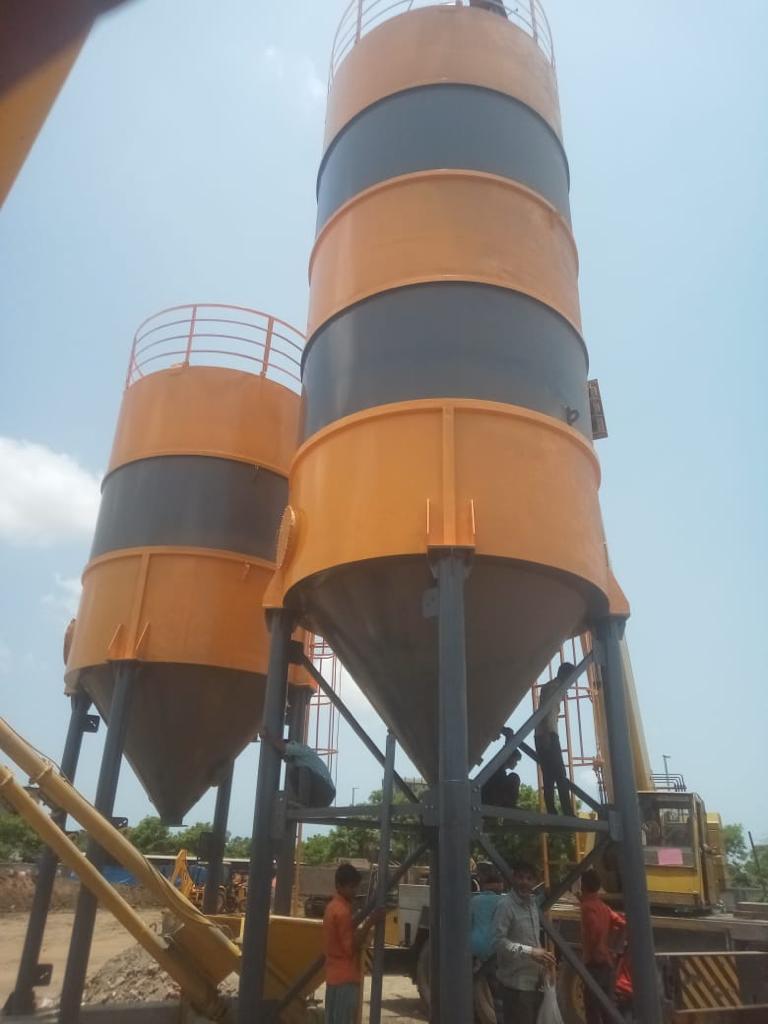Get In Touch
Get In Touch




A micro silica silo is a specialized storage container designed for the safe and efficient handling of microsilica, a highly reactive and fine-grained material. Microsilica, also known as silica fume, is a byproduct of silicon metal and ferrosilicon alloy production, valued for its pozzolanic properties in concrete. These silos are constructed to prevent moisture ingress, minimize particle agglomeration, and maintain the material's quality. They are equipped with aeration and discharge systems to facilitate controlled and accurate dosing of microsilica into concrete mixtures, ensuring improved concrete strength, durability, and resistance to environmental factors in construction applications.
1. Silo Capacity: The storage capacity of the silo, usually expressed in metric tons or cubic meters. It can vary based on the specific application and user requirements.
2. Silo Construction Material: The material used for constructing the silo, which is often stainless steel or carbon steel with suitable coatings to prevent corrosion.
3. Silo Design: The design of the silo can vary, including configurations like cone-bottom, flat-bottom, or other designs, depending on the intended use.
4. Aeration System: Details about the aeration system, which is crucial to maintain material flow and prevent clogging or compacting of micro silica. This may include aeration pads, fluidization systems, or other devices.
5. Discharge System: Information on the discharge system, which could involve screw conveyors, vibratory feeders, or other equipment designed to accurately dispense micro silica.
6. Filtration System: If applicable, describe the filtration system used to maintain air quality and prevent dust emissions during loading and unloading.
7. Temperature Control: Specify any temperature control mechanisms if the storage conditions of micro silica need to be regulated to prevent condensation or moisture ingress.
8. Access and Inspection: Include features for safe access and inspection, such as access doors, inspection hatches, and ladders, to facilitate maintenance and monitoring.
9. Environmental Considerations: Mention any environmental measures or features, such as dust collection and emissions control, to ensure compliance with air quality regulations.
10. Safety Features: Highlight safety features, such as safety rails, level sensors, alarms, and emergency venting, to prevent accidents and ensure safe operation.
11. Pressure Rating: Specify the maximum pressure the silo can withstand, especially if it's designed for pressurized applications.
12. Seismic Design: If applicable, indicate if the silo is designed to withstand seismic forces and meets relevant seismic standards.
13. Certification: Compliance with industry-specific standards and certifications, if required, to ensure quality and safety.
14. Control and Monitoring: Mention any control and monitoring systems, such as level sensors, weighing systems, and data logging, to provide accurate inventory management.
15. Installation and Foundation: Provide guidelines or requirements for the silo's installation, including foundation specifications and site preparation.
1. Concrete Production: Micro silica, with its pozzolanic properties, is added to concrete mixtures to enhance strength, durability, and resistance to chemical attack. Silos accurately dispense micro silica into concrete batchers, ensuring consistent and high-quality concrete production.
2. Infrastructure Projects: Micro silica silos are employed in major infrastructure projects, including bridges, tunnels, and high-rise buildings, where high-strength concrete is essential to withstand heavy loads and environmental factors.
3. Shotcrete and Precast Concrete: In shotcrete applications, micro silica is often used to improve the performance of sprayed concrete. Precast concrete facilities also utilize silos to enhance the properties of concrete elements such as beams, columns, and panels.
4. High-Performance Concrete: Micro silica silos are integral in the production of high-performance concrete for applications like airport runways, parking structures, and industrial floors, where exceptional strength and durability are prerequisites.
5. Mass Concrete Structures: In projects like dams, retaining walls, and nuclear power plants, micro silica silos are used to develop concrete mixtures with low permeability and high resistance to cracking.
6. Repair and Rehabilitation: Micro silica is added to repair and rehabilitation projects, such as repairing bridges and damaged concrete structures, to enhance durability and extend the lifespan of the infrastructure.
7. Specialized Concrete Mixtures: Silos play a role in the formulation of specialized concrete mixtures, including self-consolidating concrete (SCC) and high-strength self-leveling floors, which require precise dosing of micro silica.
8. Tunneling and Mining: Micro silica is utilized in tunnel construction and mining applications to create shotcrete for tunnel linings and ground support systems, enhancing structural integrity and safety.
9. Industrial Flooring: In industrial settings, such as factories and warehouses, micro silica is used in concrete mixtures for highly abrasion-resistant and smooth industrial floors.
10. Residential Construction: Micro silica silos are employed in residential construction, where high-performance concrete is needed for foundations, driveways, and structural elements.
11. Bridge Deck Overlays: Micro silica-modified concrete is used to overlay bridge decks, providing improved wear resistance and protection against de-icing chemicals.
12. Architectural Concrete: Silos help create architectural concrete with precise finishes and unique designs in applications like decorative walls and facades.


